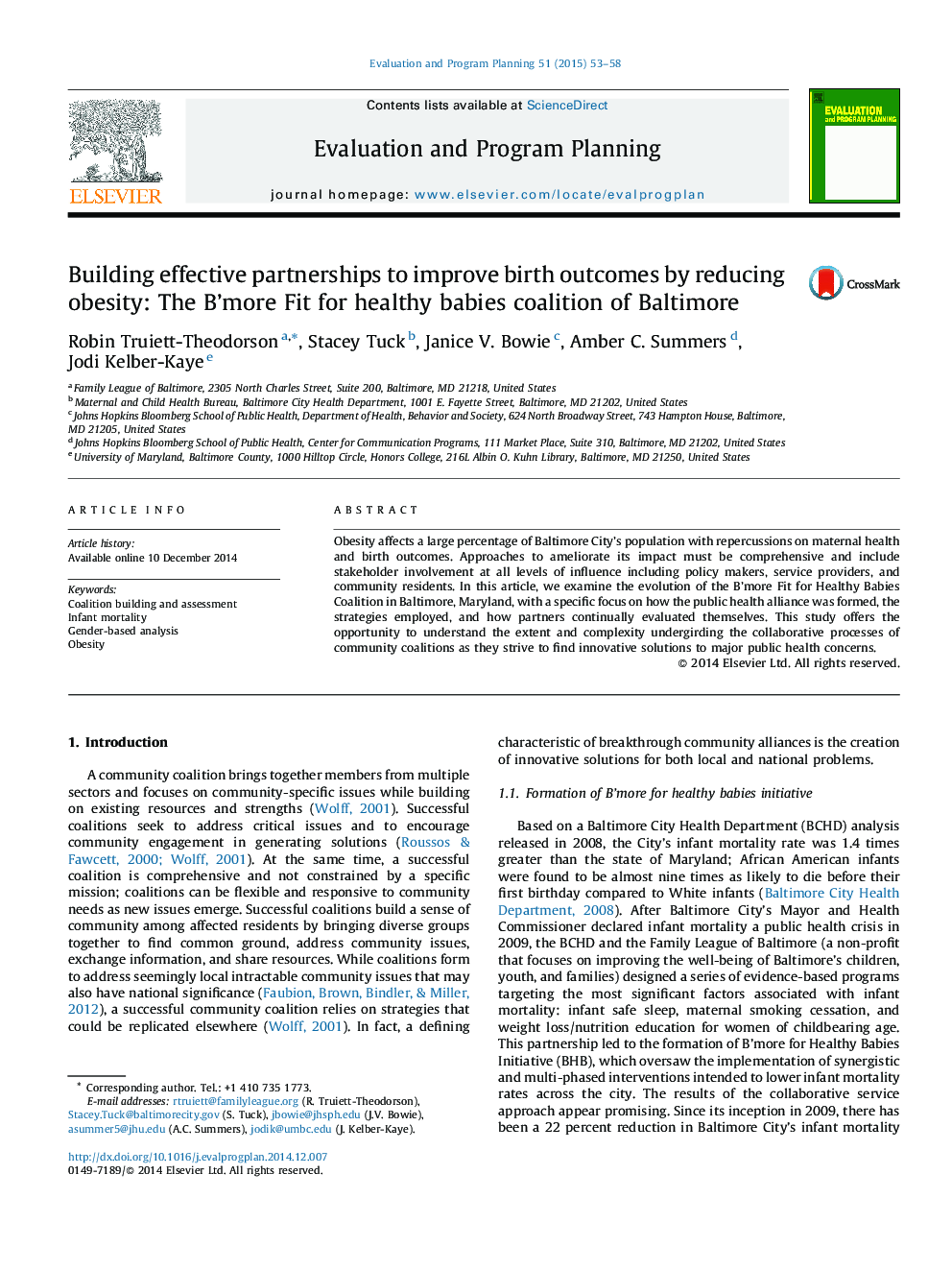| Article ID | Journal | Published Year | Pages | File Type |
|---|---|---|---|---|
| 322456 | Evaluation and Program Planning | 2015 | 6 Pages |
•The Social Ecological Model formed the conceptual scaffolding for the program's strategy to improve birth outcomes, emphasizing multiple levels of influence such as individual, interpersonal, organizational, community, and public policy.•Coalition leaders monitored group cohesiveness and performance by conducting a formal assessment; the assessment indicated that the coalition scored highly in all categories ranging from community presence, connection, and influence, to team building and effective governance.•The coalition's success hinged on partnering with the community to identify issues, build on coalition and community resources, and be responsive, flexible, and empowering.
Obesity affects a large percentage of Baltimore City's population with repercussions on maternal health and birth outcomes. Approaches to ameliorate its impact must be comprehensive and include stakeholder involvement at all levels of influence including policy makers, service providers, and community residents. In this article, we examine the evolution of the B’more Fit for Healthy Babies Coalition in Baltimore, Maryland, with a specific focus on how the public health alliance was formed, the strategies employed, and how partners continually evaluated themselves. This study offers the opportunity to understand the extent and complexity undergirding the collaborative processes of community coalitions as they strive to find innovative solutions to major public health concerns.
